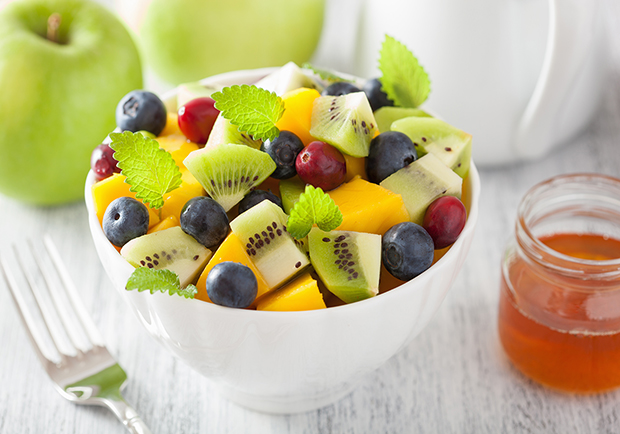How An Apple A Day Can Help Your Diet Plan
Red or green, tart or sweet, apples are great for your diet plan.

There are more than 7,500 varieties of apples around the world. If they aren’t already the “apple of your eye,” they should be. Apples can be a great contribution to your diet plan, no matter the type. They're packed with nutrients, making them the perfect snack or side dish.
Nutritional benefits of apples in your diet
Besides just being a tasty snack, apples have a wealth of nutritional benefits. They’re rich in polyphenols, a type of antioxidant that could help lower the risk of heart disease.
Flavonoids are also plentiful in apples and may contribute to lower blood pressure. Nearly all varieties of apples have Vitamin C, Vitamin A, calcium, and potassium—all essential nutrients to help your body function properly.
One of the biggest advantages of having apples as a contributing part of your diet plan is their high fiber content, which can help you feel full and stabilize your blood sugar.
Apples contain two types of fiber: soluble and insoluble. Soluble fiber helps feed healthy gut bacteria while insoluble fiber can help you maintain regular bowel movements.
A medium-sized apple contains about four grams of fiber, which is about 17% of your daily recommended intake.
Additionally, apples are a great snack to include in your diet because of what they don’t have: no fat, no cholesterol, and only trace amounts of sodium.
Related: Which Apple Is the Healthiest For You?
Differences in types of apples
Whether you’re a fan of Red Delicious, Granny Smith, or Honeycrisp apples, you know that there are many varieties of apples to choose from. Nutritionally, they are all similar, but there are a few key differences. If you’re being careful about including apples in your diet plan, the slight differences could be significant for you.
Apples with green skin, such as Granny Smith, tend to have more fiber, less sugar, and fewer carbohydrates. Apples with red skins, such as Gala and Fuji, tend to be higher in antioxidants and have better anti-inflammatory properties.
Depending on what your goals are, one type may contribute more to your diet than another. Whichever type you chose, the important thing is that you’re eating them.
Related: How Many Types of Apples Are There? And Which Is Best?
Apples and workouts
Apples are an ideal pre-workout snack. They’re mainly composed of water, which can help keep you hydrated, and simple sugars, such as glucose, sucralose, and fructose.
These simple sugars give you a burst of energy. But unlike a lot of pre-workout drinks or supplements, the simple sugars in apples have a relatively low glycemic index (usually between 30 and 44), which means that they won’t spike your blood sugar.
You won’t have an energy crash afterwards, which makes them more friendly to people with unstable blood sugar levels, such as those with diabetes and hypoglycemia.
Benefits of apples vs. other fruits
Eating fruit is a great way to contribute to your diet plan. However, apples are particularly useful to eat when compared to other fruit options.
Apples come in a stunning number of varieties, which means there’s a flavor out there that you’ll love. Apples are hardy fruits that can last a long time after they’ve been picked.
They can last up to a year if they’re stored correctly, so they’ll last longer on your countertop than bananas and many citrus fruits. There’s also almost always fresh apples in season at the grocery store.
Whichever color or type of apple you choose, apples are a nutritious and energizing snack. They’re available nearly year-round in almost all places on the globe, and they’re the perfect pre-workout snack. Tart or sweet, apples can be a great contribution to your health goals.





